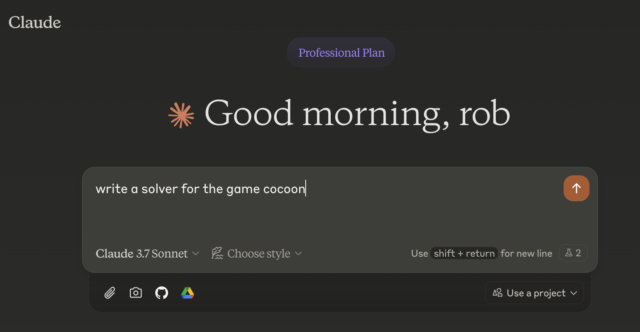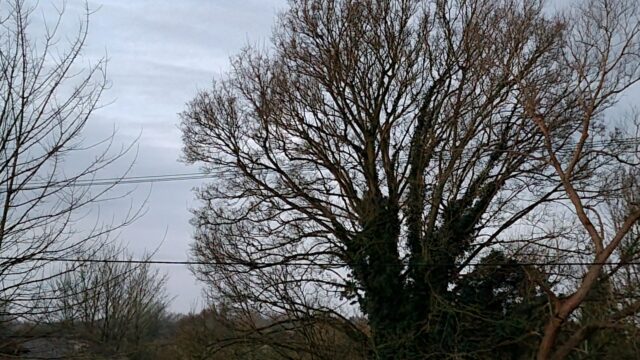Last month my pest of a dog destroyed my slippers, and it was more-disruptive to my life than I would have anticipated.

Sure, they were just a pair of slippers1, but they’d become part of my routine, and their absence had an impact.
Routines are important, and that’s especially true when you work from home. After I first moved to Oxford and started doing entirely remote work for the first time, I found the transition challenging2. To feel more “normal”, I introduced an artificial “commute” into my day: going out of my front door and walking around the block in the morning, and then doing the same thing in reverse in the evening.

It turns out that in the 2020s my slippers had come to serve a similar purpose – “bookending” my day – as my artificial commute had over a decade earlier. I’d slip them on when I was at my desk and working, and slide them off when my workday was done. With my “work” desk being literally the same space as my “not work” desk, the slippers were a psychological reminder of which “mode” I was in. People talk about putting on “hats” as a metaphor for different roles and personas they hold, but for me… the distinction was literal footwear.
And so after a furry little monster (who for various reasons hadn’t had her customary walk yet that day and was probably feeling a little frustrated) destroyed my slippers… it actually tripped me up3. I’d be doing something work-related and my feet would go wandering, of their own accord, to try to find their comfortable slip-ons, and when they failed, my brain would be briefly tricked into glancing down to look for them, momentarily breaking my flow. Or I’d be distracted by something non-work-related and fail to get back into the zone without the warm, toe-hugging reminder of what I should be doing.
It wasn’t a huge impact. But it wasn’t nothing either.

So I got myself a new pair of slippers. They’re a different design, and I’m not so keen on the lack of an enclosed heel, but they solved the productivity and focus problem I was facing. It’s strange how such a little thing can have such a big impact.
Oh! And d’ya know what? This is my hundredth blog post of the year so far! Coming on only the 73rd day of the year, this is my fastest run at #100DaysToOffload yet (my previous best was last year, when I managed the same on 22 April). 73 is exactly a fifth of 365, so… I guess I’m on track for a mammoth 500 posts this year? Which would be my second-busiest blogging year ever, after 2018. Let’s see how I get on…4
Footnotes
1 They were actually quite a nice pair of slippers. JTA got them for me as a gift a few years back, and they lived either on my feet or under my desk ever since.
2 I was working remotely for a company where everybody else was working in-person. That kind of hybrid setup is a lot harder to do “right”, as many companies in this post-Covid-lockdowns age have discovered, and it’s understandable that I found it somewhat isolating. I’m glad to say that the experience of working for my current employer – who are entirely distributed – is much more-supportive.
3 Figuratively, not literally. Although I would probably have literally tripped over had I tried to wear the tattered remains of my shredded slippers!
4 Back when I did the Blog Questions Challenge I looked at my trajectory and estimated I wouldn’t hit a hundred this year until a week later than now, so maybe I’m… accelerating?
![A notebook is held in front of terminal output. The terminal begins with 'Start position: [0,4]' and then shows a series of 5×5 grids containing numbers: one, labelled 'Route:', shows random grid of the numbers 0 through 24; the second, labelled 'Puzzle:', contains 1s, 2s, and 3s, corresponding perhaps to the orthagonal distances between consecutive numbers from the first grid; the third, whose title is obscured by the notebook, shows the same thing again but with 'walls' drawn in ASCII art between some of the numbers. The notebook in front contains hand-drawn sketches of similar grids with arrows "jumping" around between them.](https://bcdn.danq.me/_q23u/2025/03/20250313_100059-640x487.jpg)







